
Mar 25, 2018 | Featured, School Trips
By Miro Bergam (V)
On February 9, students enrolled in American Society and Culture, a junior American History class, and American Perspectives, a spring English elective, spent the day visiting the Tenement Museum in the Lower East Side of Manhattan, New York City. The trip was chaperoned by American Perspectives teacher Dr. Anne Dickerson, American Society and Culture teacher Ms. Colleen Kent, and Library Director Mrs. Eileen Hymas.
When the group arrived, they were split into two different tours. Half of the group went on the “Hard Times” tour, where they visited the tenements of the German-Jewish Gumpertz family and Italian-Catholic Baldizzi family. The tour focused on tough economic times for these immigrant families, including stories of how the Gumpertz patriarch abandoned his family during the Panic of 1873 and how the Baldizzis survived an extended period of unemployment during the Great Depression.
The other half of the group attended the “Irish Outsiders” tour, where they studied the Moores, an Irish-Catholic family living in the tenements in the late 19th century. The tour focused on the struggle of celebrating Irish heritage while enduring the prejudice that existed at the time.
“The tour connected really well with the work we are doing in American Perspectives,” said Jeffrey Xiao (V), “where we are currently reading Hungry Hearts by Anzia Yezierska, a short story collection about different immigrants coming to America and living in tenements.”
“Pingry has sent people to the Tenement Museum in the past, but this is Dr. Dickerson’s and my first year chaperoning the trip,” said Ms. Kent, who learned about the museum while visiting with a professional development program she attended last summer. She explained, “I thought it was a great fit for American Society and Culture. Getting to see the conditions of the tenements in real life is much more powerful and is a really good example of experiential education.”
After visiting the museum, the group had lunch at several different local eateries, ranging from a Chinese wonton shop to a small Italian restaurant. “We decided to split up and eat at a few very different places that were all a bit spread out to show off the diversity of the neighborhood that developed around these tenements,” explained Ms. Kent.
At the end of the day, the group reconvened and took the bus back to Pingry. All of the classes that attended the trip discussed the museum experience and how it related to their coursework at their following class meetings. When asked about what she gained from the experience, Lexy Beard (V) said, “It was cool to use the Tenement Museum to connect the modern New York City, a place we all visit very often, with history that we are studying in school.”
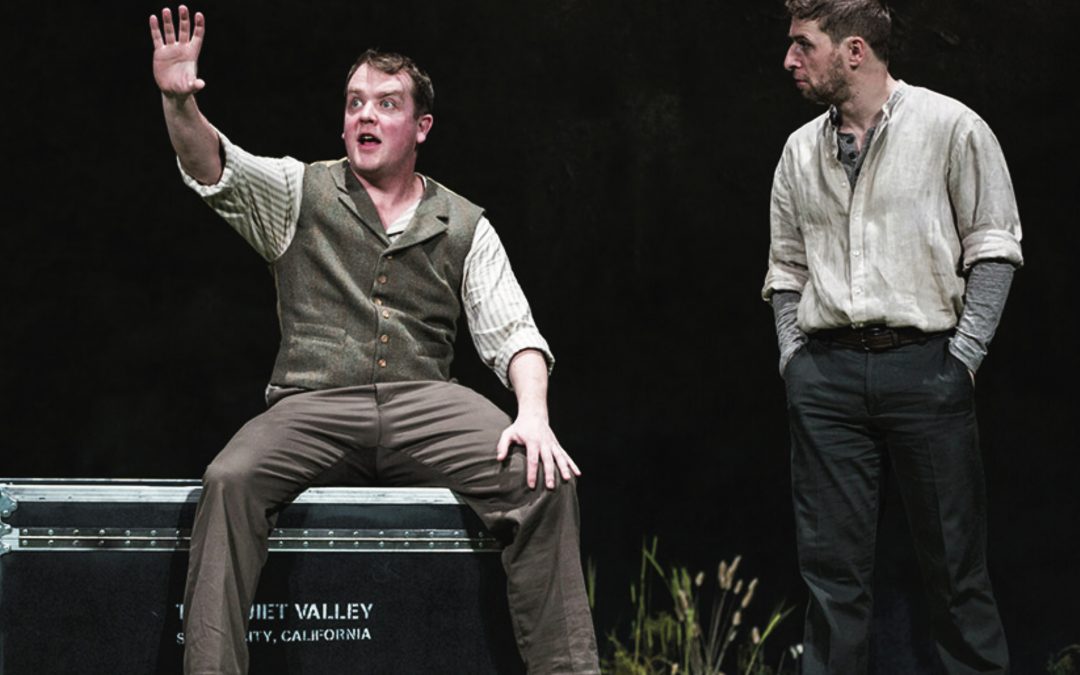
Mar 25, 2018 | Arts, Featured, School Trips
By Brooke Pan (III)
On February 1, the students in the Drama program visited the McCarter Theater to see a live performance of the play Stones in His Pocket by Marie Jones. There, students were captivated by the performance of two actors, Garrett Lombard and Aaron Monaghan, who each played more than ten characters throughout the performance. Though different from a standard play in terms of the number of actors, Ms. Stephanie Romankow, the drama teacher, remarked on the importance of how just two actors “were able to portray such a unique story” by “rearranging their physical roles.”
Stones in His Pocket, set in a rural town in Ireland, tells the story of two friends who are hired to play extras for a movie. In the beginning, the friends are enthralled by the idea of being in a movie; however, as the film carries on, the charm and appeal of life on the silver screen starts to disappear. The play is set in motion when a local townsperson commits suicide from the humiliation he underwent when trying to socialize with one of the movie stars of the film. The two friends and the townspeople are devastated by his passing and are conflicted when the film crew are unwilling to let the extras take time off to attend the townsperson’s funeral. After fully understanding his situation, two friends gain a new perspective, allowing them to recognize the reality of how the film crew’s selfish desires to finish the movie left them uncaring for the people of the town. To try and honor the local townsperson, the two friends try to rewrite a script dedicated to his life. When they present the script to the director of the movie, the director ironically suggests the lack of romance would not appeal to the general audience.
After returning to Pingry, classes reflected on their perspectives of the play. When asked about the most important message of the play, Ms. Romankow emphasized “the importance of extras in life,” suggesting that “no one should be overlooked…. Everyone has their own story.” Ms. Romankow thoroughly enjoyed the trip and is looking forward to more drama field trips.
In addition to the teachers, the students also had their own takes on the show. “Watching seasoned actors perform in a show like Stones in His Pockets really allowed us to see how the skills and techniques we learn in drama are implemented at the professional level,” said Megan Pan (VI). Overall, the field trip to the McCarter Theater offered a unique experience for the drama students, one from which they could learn and grow as a community of actors.
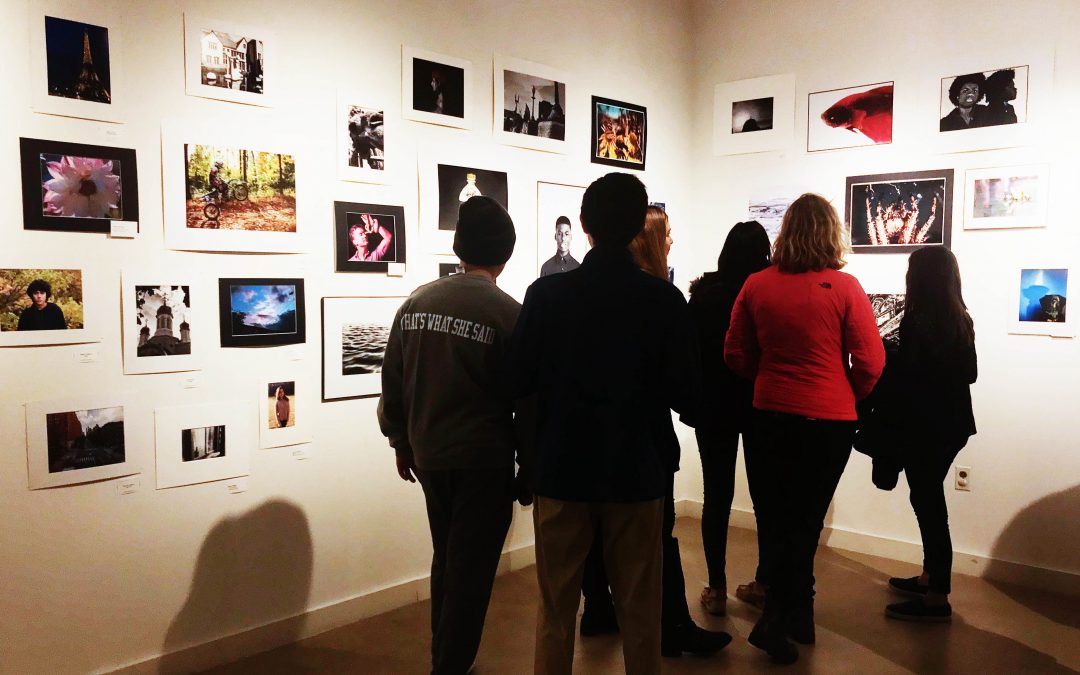
Mar 25, 2018 | Arts, Brynn Weisholtz, School News
By Rhea Kapur (III)
From February 7th through March 6th, the Hostetter art gallery was home to the 22nd Annual Pingry Student Photography Exhibition. Over two hundred photographs were submitted, depicting the best work of students spanning fifteen different public and private high schools near Pingry. The judge of this year’s show was Peter Jennings, a photographer, director, and artist based in New York.
The work included both traditional, film-based photographs and digital prints. Many different tones and moods were represented, ranging from dark and mysterious to light and upbeat. The exhibit captured a range of unique perspectives about current events and everyday moments.
For example, Conor Mahoney (VI)’s photograph, titled “Anger Management,” features a fist punching into water, possibly symbolizing the need to release the stress and anger that high schoolers frequently experience. Additionally, “Cigarettes” by Remi Nichols from North Hunterdon High School was another standout work, featuring a jar full to the brim with cigarette stubs. It potentially speaks to the cost of smoking in society and how it must be controlled and contained to minimize the terrible health-related impact on future generations. Lastly, “Bliss,” a black-and-white photo by Arieliz Ramos from County Prep HS, featured two young girls laughing together, referencing the incomparable bond of friendship and the joy it brings between sisters, friends, and family.
For the observers of this exhibition, the experience of viewing and interpreting the photos was enthralling. Monica Chan (III) reflected on how “it was interesting to see how Pingry hosts different photographers and allows them to display their work.” An artist herself, Monica remarked that “she finds photography useful as a reference to use when drawing,” taking inspiration from the exhibit in that way.
Mr. Boyd reflected on how “this show provides an opportunity for Pingry students to get a snapshot of student photography in New Jersey.” He also spoke to how Hostetter has “allow[ed] Pingry to realize its full artistic expression.” With its constant variety of exhibitions, he advises Pingry students to visit the gallery often, saying how many students’ lives have been “forever changed by its exceptional vision.”
Visual Arts teacher Mrs. Jennifer Mack-Watkins also remarked that “the stories that these young artists are telling with their photographs have to do with common themes that teenagers go through,” and she has seen how enriching it is for other students to observe the work. Mrs. Mack Watkins views this exhibit as a “great way for students to connect with each other” overall.
The following Pingry students were featured in the 22nd Annual Pingry Student Photography Exhibition:
Brynn Weisholtz (IV), Grace Brown (V), Maddie Parrish (VI), Mitchell Pavlak (VI), Olivia Nugent (IV), Namita Davey (VI), Natalie Ladino (IV), Conor Mahoney (VI), Mariam Trichas (VI), Owen Wolfson (VI), Madeline Skapper (IV), Leighton Mayers (V), Maddie Massey (IV), Evan Taylor (V), Nicolette Brigante (IV), Noelle Mullins (IV), Peter Papadopoulos (IV), Ben Ingrassia (V), Ben Mandelbaum (V), Caroline Dannenbaum (IV), Annie Oatman (IV), Abby Jay (V), Tyler Williams (VI), Rita Harrobin (IV), Mercedes Garcka-Kenny (IV), Sophie Loesberg (VI), Aubrey Molloy (VI), Alli Simon (V), Ilana Lurie (VI), Ben Ramos (VI), Nicole Toney (V), Sidney Shannon (VI), Annie Smith (IV), Abby Beckmen (V), Zach Trichas (V), Ryan Geller (IV), Olivia James (V), Kamal Brown (V), George Mychajluk (VI), Lindsey Larson (VI), Alberto Choussy (V), Brian Benson (V), Hailey Cernuto (VI), Chase Barnes (V), Nikki Vanasse (IV), Jordan Taylor (VI), Sophia Weldon (VI), and Kassidy Peterson (VI).
Mar 25, 2018 | Brynn Weisholtz, School News
By Brynn Weisholtz ’20
On February 14, the Black Student Union (BSU) held the annual all-school Black History Month assembly. Bringing both the students and the faculty together in Hauser Auditorium, the school celebrated the achievements and honored the hardships of black people in the past and acknowledged the present day struggles of the black community. This was the second year this assembly was run by the Black Student Union, which is headed by the Chair of the Diversity and Inclusion Department, Dr. Diana Artis.
Roughly 20 high school students took part in the assembly in both performance and organization. “We were all proud to show the school what black history means to us,” said Noelle Mullins (IV).
The assembly showcased various student performances such as singing, reciting poetry, performing spoken word, and showing prerecorded videos. Highlights included Glory by Macklemore sung by Jared Tiggs (VI) and Iman Khan (VI), the poem Still I Rise by Maya Angelou performed by a group of students, The Revolution Will Not Be Televised by Gil Scott-Heron recited by Channing Russell (VI), Tyler Williams (VI), and Obi Nnaeto (VI), and a moving letter by Jordan Taylor (VI) to her adopted cousins, encouraging them to stay strong in the face of oppression.
Each BSU member contributed to this assembly and showed why they believe it was important to hold. Speaking about the message of the gathering, Gabrielle Billington (IV) said, “It is important for all people to understand the significance of recognizing the black community no matter what race they are. There is so much history that has shaped this community to be what it is today.”
While only thirty minutes long, the assembly had quite an impact on the audience. It evoked the realization that, as Brian Benson (V) said, “black history is not explored enough in the average history class, and in general, people need to learn more about the topic.” Sydney Tindall (IV) said of the experience, “This assembly showed the truths of black history through the efforts of others and expressed the injustices that have been seen throughout history.”
Mar 25, 2018 | Arts, School News
By Udochi Emeghara (V)
On Monday, January 22, the Drama II class held their annual drama assembly showcasing the skills they have worked on throughout the year. This year, the class performed “Appropriate Audience Behavior” by Mr. Ian McWerthy. This play spoofs behaviors that are deemed unacceptable by the theatre community, such as eating during a show or speaking loudly during a production. While this play spans many topics, there were many parts that stood out. Highlights included Stuart Clark (IV) bringing spaghetti on stage and proceeding to eat it and laugh uncontrollably; James Raincsuk (IV) complaining about his tax dollars being spent on terrible chairs; Maddie Pilla (IV) ranting in annoyance at the actions of her peers; Corby Elliot (IV) cheering rambunctiously; Kelsey Ransom (IV) preaching pretentiously; and Helen Baeck-Hubloux (IV) melting down at the end of the play. These are just a few of the moments that made the show so spectacular. The commitment to the art of acting was impeccable and was clearly seen in Josh Thau (IV) and Jessica Hutt’s (IV) portrayals of old people and the way Alexandra Weber (IV), Amy Composto (IV), Julia Guagliardo (IV), and Sonia Talarek (IV) stayed in character throughout the show.
In spite of time constraints, the Drama II class put on a stellar performance. According to Mr. Alan Van Antwerp, the Drama II teacher, the group started rehearsing after winter break: this is customary as Mr. Albert Romano, the former Drama II teacher and head of the Drama department, had always followed this schedule. Since winter break started a week later this year than in the past, this left the Drama II students only five rehearsals to learn all their lines and stage the play.
As it was his first production, Mr. Van Antwerp described the process as nerve-wracking, especially when showing the work to his peers. Still, he said he was lucky to have such talented students who were able to pull off this production. In addition, Mr. Romano was in the audience and congratulated the Drama II students and Mr. Van Antwerp on a job well done. All in all, it is clear that this assembly was received well by the community and that the Drama II class has made the Arts Department very proud.
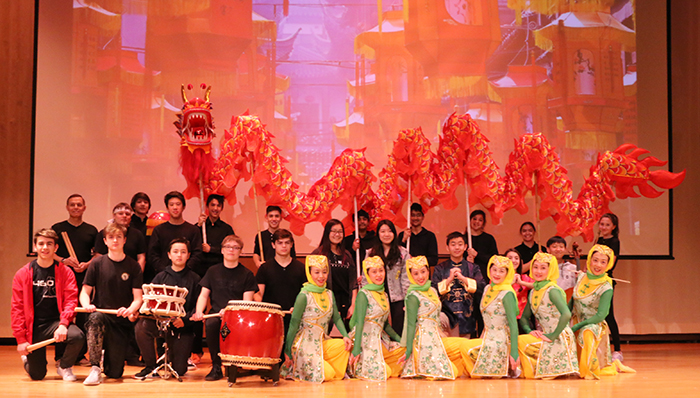
Mar 25, 2018 | School News
By Felicia Ho (V)
Weaving through the packed audience, the Form II Chinese class opened up the Lunar New Year Assembly with a lively performance of a traditional dragon dance. Dragons are recognized as auspicious creatures in Chinese legend and symbolize good luck for the New Year. The Lunar New Year, also known as the Spring Festival, begins on February 16 of the Gregorian Calendar, or the 23rd day of the twelfth lunar month. It lasts around 23 days according to old folk tradition, ending on the fifteenth day of the first lunar month of the New Year. Based on the Chinese Zodiac twelve-year cycle, this year also marks the arrival of the Year of the Dog.
Brian Li (IV) and Natalie DeVito (II) served as the announcers for the assembly, setting the tone for the rest of the program by noting that the Lunar New Year is an important time of reunion and celebration.
First, Ethan Chung (VI) on the cello and Rebecca Lin (VI) on the violin performed a duet entitled “Swan Geese.” DeVito described the meaning of the title as “swans migrating home as spring approaches… as do so many people around the world as they return to their families during the Lunar New Year.” To bridge the gap between old traditions and new ways, Lin and Megan Pan (VI) performed an excerpt of the popular K-pop song “Tomorrow, Today” from the JJ Project. B. Li explained the song as “telling the feelings of youth and highlighting the difficulty of making decisions about the future.”
The Taiko Drumming Club delivered a rendition of “Matsuri,” a piece often played at Japanese festivals. The performance featured solos by Michael Gallagher (V), Pan, and Justin Li (III). Although Taiko drums are widely known as Japanese percussion instruments, they have Chinese and Korean roots, having been introduced to Japan in the 6th century CE. In closing, to celebrate the diversity of the Chinese people, the Purple Swans Dance Troupe, a performing arts group dedicated to spreading Chinese culture that features many members of the Pingry community, performed a dance entitled the “Delicate Beauty of the Hui Maiden.” This dance represents the Ningxia Hui Autonomous Region in north-central China, a region that is home to a large indigenous Chinese Muslim population.
Before dismissing the assembly, B. Li and DeVito wished everyone “Xin nian kuai le,” which in Mandarin means “Happy New Year!” Gong xi fa cai and have a prosperous New Year. Welcome to the Year of the Dog.

Mar 25, 2018 | Columns, Music
By Allie Verdesca ’18
All right, raise your hand if you’ve had this experience. During a family car ride, your mom or dad would turn up the radio and sing along – a little too loudly – to the music they loved as a teenager: classic rock. Maybe it was Bruce Springsteen, maybe the Rolling Stones, maybe the Eagles. Although I might not want to admit it to my parents, a lot of this music has stayed with me throughout my life and provides a nice break from today’s oft-auto-tuned pop offerings.
For this column, I want to explore these musical roots. This is in no way a comprehensive list of the best classic rock songs. Instead, I will highlights songs that I’ve been listening to at the moment. With that said, here are three of my favorite classic rock and roll songs.
The first song on my list has made a comeback recently due to the popular Netflix show, Stranger Things. “Should I Stay or Should I Go” by the Clash plays in one of the first episodes of the first season. Stranger Things, which is set in the 1980s fictional town of Hawkins, Indiana, is known for its nostalgia. This nostalgia has exposed a whole new generation to the Clash’s hit single. One thing I love about classic rock is the amount of guitar highlighted in each song. “Should I Stay or Should I Go” pairs raunchy guitar riffs with a solid, catchy drum beat. The song shifts tempo from the verses into the chorus, creating an effect that keeps the listener guessing. The vocals are shouted in punk-esque style, highlighting the band’s origins as a part of the first wave of British punk. The song is a great addition to a throwback playlist, and it should keep you going through these brutal weeks before Spring Break.
Another song I listened to growing up is “Uptown Girl” by Billy Joel. Frankly, any Billy Joel song could make this list. Billy Joel is arguably the quintessential classic rock artist. He has sold over one million tickets at Madison Square Garden, setting the record for any single artist, and he will be performing his fifty-fifth consecutive show in August during his musical residency at MSG. Of all his songs, however, “Uptown Girl” is one of my favorites. Anyone who claims “Uptown Girl” isn’t catchy is lying; the rhythm is infectious and conveys the song’s status as a cheerful earworm. The song is playful and light; it stands in perfect contrast to “Should I Stay or Should I Go.” Nostalgic vocals back the lively chorus, giving the song a danceable beat.
The last throwback song on my list is “Call Me” by Blondie. Showcasing the vocals of female singer Debbie Harry, Blondie was among the first bands to show that girls could rock and roll alongside the guys. A quintessential eighties band, Blondie’s other hits included “One Way or Another” and “Heart of Glass.” “Call Me,” which was Billboard’s most popular single in 1980, pairs girly pop vocals with a steady and tempestuous drum beat underneath. The vocals are certainly part of the rock genre; the song, like “Should I Stay or Should I Go,” prioritizes instrumentals over vocals, which is common among classic rock songs. The simplicity of the vocals and the driving beat gives the song its iconic reputation.
I hope these three throwback songs will provide you with a little nostalgia and encourage you to listen to classic rock. In our modern era of auto-tune and rap, it’s always nice to hear the bands and singers who put the era of popular music into motion. Happy listening!
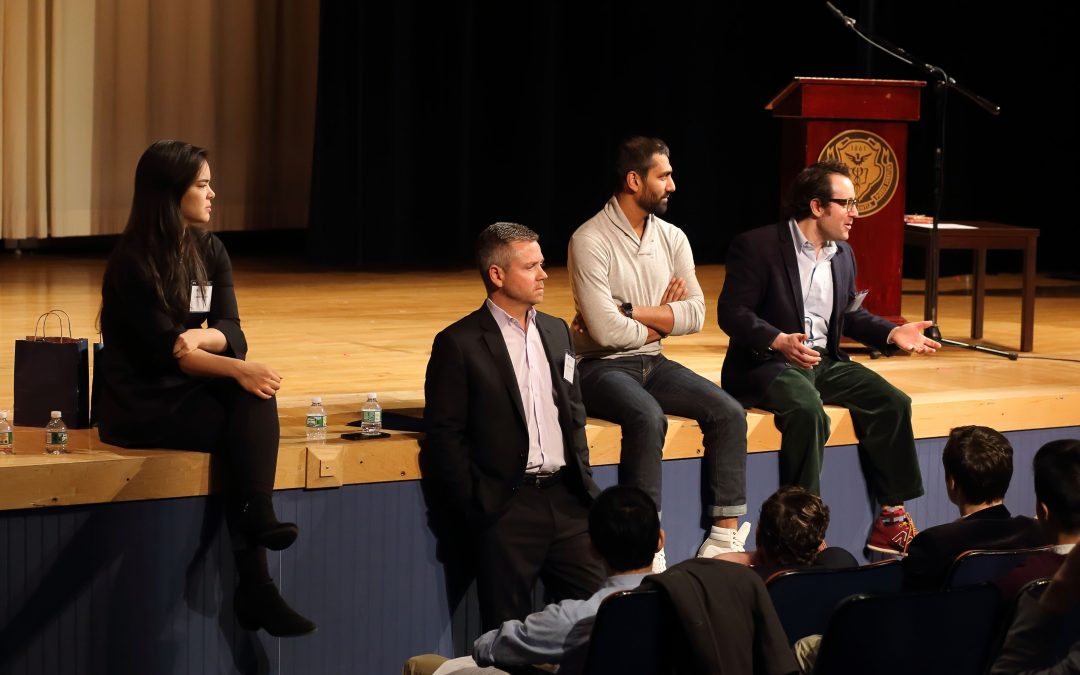
Mar 25, 2018 | School News
By Ketaki Tavan
On Friday, January 26, Pingry held its annual Career Day, an event during which Form V and VI students have the opportunity to speak with diverse panels of Pingry alumni to learn more about potential career options.
The day began with a presentation from keynote speaker Dr. Jennifer Hartstein ’88, a psychologist who helps children, adolescents, and their families with a wide range of psychological diagnoses. On the executive board of Active Minds, a national organization devoted to decreasing the stigma surrounding mental health in young people, Dr. Hartstein is also a “Self-Esteem Ambassador” for Dove’s “Real Beauty” campaign.
During her presentation, Dr. Hartstein discussed the effects of developing technology and increased social media usage on today’s youth. She also shared stories about how her interest in psychology developed during her time at Pingry.
After the keynote presentation, students attended three separate industry-focused sessions, assigned based on preferences they indicated a few weeks prior. The sessions covered a broad range of fields, inlcuding engineering/architecture, entrepreneurship, finance, law, management consulting, marketing/advertising, media/communications, medicine, nonprofit/public-service, performing arts, visual arts, psychology, and science. Each session featured two or three alumni panelists who shared their experiences in their current fields and answered any questions students had for them.
Ms. Maureen Maher, who organized Career Day, commented on the value of these panels, saying, “The guidance and life lessons that our returning alumni share with our students on Career Day are invaluable, and the Pingry alumni network is an amazing resource that continues to get stronger every year.” Jackie Chang (VI), who attended the medicine panel, was led to an ISP opportunity through the alumni network that Ms. Maher refers to. “At the medicine panel, I got to meet Dr. Matthew Chow, who is actually going to be my ISP mentor. If I hadn’t attended the panel and met Dr. Chow, I never would’ve had my current ISP project,” Chang said.
The media/communications session featured panelists from the industries of publishing and media, including Jonathan Karp ‘82, the President of publishing company Simon & Schuster. Participants discussed the ways in which these fields are changing due to technological advances such as social media news coverage and self-publishing companies like Amazon. Miro Bergam (V) commented that “seeing Jonathan Karp, who’s one of the biggest names in publishing, and hearing his story not only spoke to the amazing connections we have at this school but also really helped me see the wide range of careers you can have success in.”
Vicky Chen (V) attended the entrepreneurship panel, where panelists shared the various ways in which they channeled their creativity, ambition, and love of excitement into entrepreneurial career paths. Chen said the entrepreneurship panel was “very encouraging.” “I really appreciated how the panelists emphasized the fact that there isn’t just one prescribed path to success when it comes to entrepreneurship. It got me thinking about all of the different places my interests could take me,” she added.
When asked what she hopes students take away from Career Day, Ms. Maher replied, “The career journey is not always a direct flight. What interests someone today might be very different from what interests him or her in 5-10 years—but that’s OK. The paths our accomplished alumni have taken throughout their professional lives are just as fascinating as their current roles and responsibilities, and yesterday’s failures have often played an essential role in today’s success. If our students ultimately find a rewarding and fulfilling path in life as a result of someone they met on Career Day or something they heard during one of the breakout sessions, well, that’s the gold medal.”
Overall, Career Day was a great success. The day’s events gave students the opportunity to learn about an array of industries and to begin thinking about how their interests might inform their future careers.

Mar 25, 2018 | Columns, Food
By Alyssa Chen (VI)
V Yan Hot Pot: one of the joys of living anywhere near Parsippany, where this recently opened hot pot restaurant is located. For anyone searching for authentic Chinese hot pot, a great deal, and a fun group meal, I would highly recommend visiting this local gem located only thirty minutes from Pingry.
First: what is hot pot? I don’t blame you for maybe not knowing; the only time I had hot pot before V Yan opened was in China when I was much younger or at the homes of family friends. Hot pot, according to the ultimate knowledge source Wikipedia (which I think sums up the idea well) is “a Chinese soup containing a variety of East Asian foodstuffs and ingredients, prepared with a simmering pot of soup stock at the dining table.”
The main idea—at least at V Yan, where each individual has their own hot pot—is that you cook your own personal soup using raw ingredients. The ingredients added to the broth, which is kept boiling at the table by a flame or by electricity, usually include thinly sliced meat (my favorite is lamb), vegetables, mushrooms, tofu, and noodles. These ingredients are then spooned out of the broth and dipped in a sauce.
Doesn’t sound too appetizing? Before I went to V Yan, I would have agreed with you—in fact, as a young kid trying hot pot out for the first time, I could not understand why people enjoyed it. However, after trying it again in Parsippany, I realized not only that hot pot is delicious and flavorful, but also that it offers a unique and creative eating experience to all who try it.
V Yan in particular offers great deals along with its fresh ingredients and exciting atmosphere. All-you-can-eat hot pot is $22, and the lunch special, which includes a set amount of ingredients, is only $12. Plus, V Yan offers a wide range of sauces to mix and has free ice cream for those who are still hungry after eating hot pot. V Yan also offers cook-your-own BBQ, an option which I have not yet tried. However, I can attest to the quality of its hot pot, and I can guess that the same guarantee applies to its BBQ. I can also attest to the authenticity of V Yan—according to my parents, who have both visited many hot pot restaurants in mainland China, V Yan offers a similar experience with ingredients that are just as good and prices that are often better than its counterparts in China.
I’d recommend getting a reservation before you go—the wait can be long, especially on weekend nights. And, once more, I want to encourage hot pot novices and experts alike to go check out V Yan Hot Pot.

Mar 25, 2018 | Columns, Media
By Aneesh Karuppur ’21
The start of the new year always marks the release of new tech. In this column, I will talk about the latest technology releases, products, and news. I will also report on updates in Pingry technology.
What’s happening in the Student Technology Committee (STC)? This past fall, STC sent out an application and accepted new members to its team. Currently, the Acceptable Use Policy is being revised to become more relevant to the community’s use of technology. STC is also interviewing students and faculty for feedback on Schoology, the online classroom platform that classes are currently using after the switch from Moodle. Furthermore, the virtual reality group is working on implementing Pingry’s VR system into multiple fields of the school. Finally, the coding group is modernizing the Community Service Portal using the programming language, HTML.
In January, the Consumer Electronics Show 2018 (CES 2018), where technology products are released and updated, took place in Las Vegas, Nevada. Here are a few of the releases that I found particularly interesting:
First, smart mirrors began gaining prevalence in this year’s show — think the Mirror of Erised from Harry Potter, which shows your heart’s deepest desires, though these smart mirrors aren’t quite as developed as the Mirror of Erised just yet. The Haier Magic Mirror allows you to try on articles of clothing virtually by superimposing images of clothing onto your reflection in the mirror. The clothes are scanned into the system via a Radio-Frequency Identification tag embedded in them. The HiMirror Mini is another interesting glass gizmo that allows you to track the effects of different skin care treatments.
Another interesting release is the rollable Organic Light Emitting Diode (OLED), a 65-inch diagonal monitor created by LG. When not in use, the monitor, which can be used as a TV, can be rolled up into a long cylinder. The user can change how much of the monitor can be viewed by controlling how much of it is rolled up, similar to the way a projector screen can be pulled down at different lengths. This flexibility allows for different scaling options and optimizes the screen for different content.
My last pick is the Vivo X20 Plus UD, an innovative smartphone with a fingerprint scanner underneath the screen. One of the biggest questions leading up to the launch of the iPhone X was whether or not it would have an on-screen fingerprint scanner, since there would no longer be a home button that doubled as a scanner. Well, we now know the answer to that: no. While FaceID is a good substitute, fingerprint scanners work better in certain scenarios. It is a big deal that Vivo was able to keep a fingerprint scanner on a bezel-less screen without putting it in a less intuitive place like the back (á la the Samsung Galaxy S8/Note 8 and the Google Pixel 2). Hopefully, we will see this technology in more upcoming phone releases.
Apple made waves recently with its long-awaited launch of the HomePod. Although the release date was a smidge late (two or three months behind schedule), the smart speaker has racked up lots of good reviews and ratings. The HomePod is essentially a high-quality speaker with advanced Siri and “smart home” functionality, as well as the ability to play music from the Apple Music streaming service. The HomePod features impressive sound, coming from a large “woofer” on top and seven “tweeters” on the bottom — an unorthodox layout. Sandwiched in between them is a six microphone array, which assures that Siri can hear you over loud music. The HomePod only works within the Apple ecosystem, which means that you will need an iPhone 5s or later running iOS 11 to operate it. The $350 price tag makes it a tough sell since it’s stuck in Apple’s ecosystem of products, but Apple fans should find it a reasonable purchase.
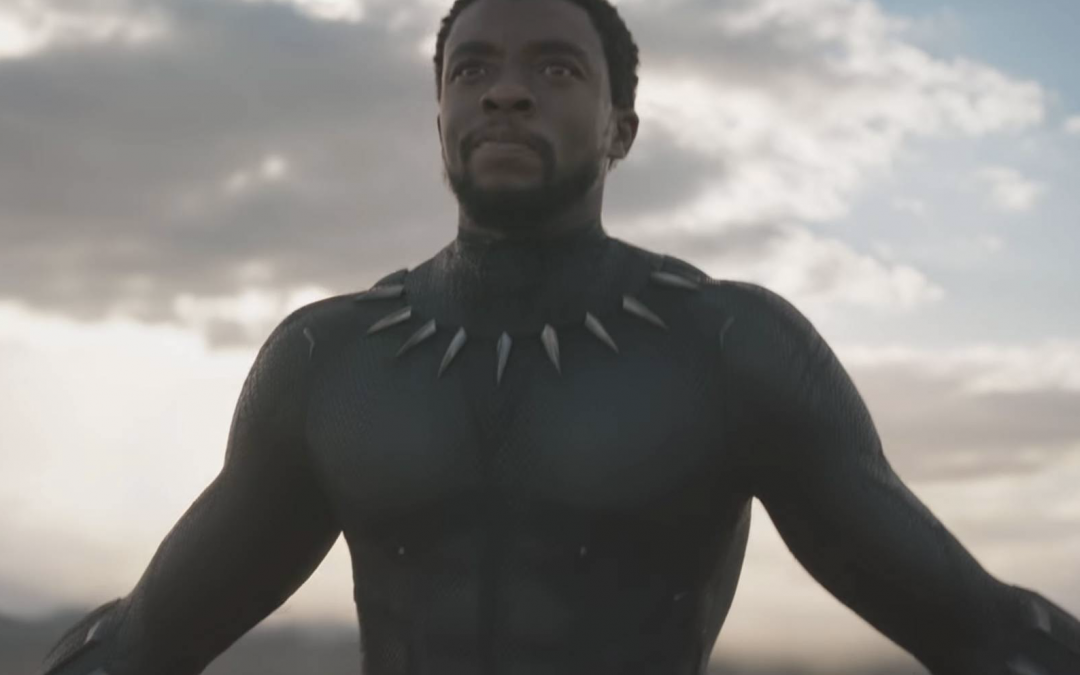
Mar 25, 2018 | Columns, Media
By Alexis Elliot ’18
Black History Month is a time to learn, remember, and celebrate the past and present achievements of African-Americans. This year, Black History Month also included the debut of Black Panther, the highly anticipated Marvel film that ties together all the values of Black History Month, inducing feelings of empowerment and cultural celebration.
The film opens with an introduction to the fictional nation of Wakanda in East Africa. Many centuries ago, this nation was struck by a meteorite that contained vibranium, the most powerful metal on Earth. Wakanda then unlocked the powers of the Black Panther and five tribes emerged. Because of the strength of the vibranium, the citizens of Wakanda did not want it to fall in the wrong hands; thus, using the vibranium, they concealed their gorgeous and technologically advanced world to appear like a barren third world country.
Unfortunately, the King of Wakanda is killed while presenting at a United Nations Press Conference. His son, T’challa, is left behind and must assume the role of the new King of Wakanda. The powers of the Black Panther are transferred to T’challa and he must ensure that there is peace both inside and outside of Wakanda’s invisible walls. One key component of Wakanda is that they have undercover spies posted in various global locations to inform the home base of any dangers to their safety.
One of the recurring problems that T’challa and the kingdom of Wakanda face is the notorious arms dealer, Ulysses Klaue. Earlier, Klaue had found a way to break into Wakanda and steal some vibranium. Ever since then, he used the powerful metal to illegally create and sell deadly weapons. T’Challa, with the aid of his female sidekicks Nakia, Okoye, and Shuri, go to South Korea on what they believe to be an easy mission to finally capture Klaue. However, T’Challa meets his match, an outsider who possesses a vibranium chain.
At the same time, a former member of Wakanda betrays the kingdom by trying to expose all of Wakanda’s resources to the world and potentially causing ruin and destruction if the vibranium ends up in the wrong hands. Black Panther and the entire Wakandan kingdom therefore face a problem that is even more potent than protecting their precious vibranium: how to address a traitor.
Black Panther is a movie filled with action packed scenes, beautiful landscapes of the fictional African nation, and many drops of humor. Even though the film was a little over two hours, my eyes were glued to the screen the entire time. Aside from the brilliantly written plot, a major highlight of this movie was the African-American representation in the cast. Cast members included Chadwick Boseman (who starred as the Black Panther), Michael B Jordan (who played the Wakanda outsider and eventual villain), Lupita Nyong’o, Angela Bassett, Danai Gurira, and Daniel Kaluuya.
Another key element in Black Panther was female empowerment. Most, if not all, of King T’Challa’s main advisors are women. The strongest warriors in Wakanda are also women. Furthermore, the soundtrack for the movie adds to the theme of African-American empowerment with top artists such as Kendrick Lamar and SZA contributing to the score. This powerful representation of African-Americans and strong women in the cast helped Black Panther become the fantastic film that it is.
As a young African-American woman, it felt good to finally see people who look like me being in the majority of a movie’s characters. Usually, superhero movies have a token Black person as a minor or stereotypical character. Black Panther rose above this norm and empowered African-Americans to take on strong roles. Black Panther is definitely a must-see movie. The electrifying music, cast, and plot make this movie excellent. I’m already planning for when I can rewatch it!
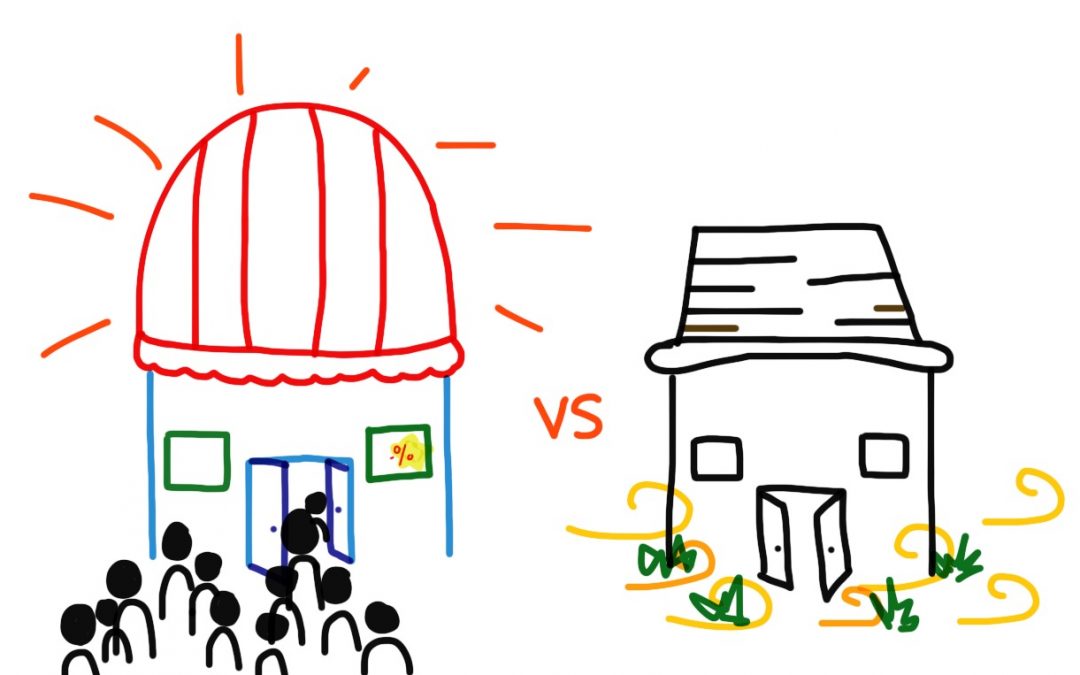
Mar 25, 2018 | Opinion
By Miro Bergam (V)
Last month, Headmaster Nat Conard went before the Pingry community at a morning meeting to speak about a situation in which one student addressed another student using a racial slur over social media. His other recent appearances include his speech last October regarding the white supremacy marches in Charlottesville, Virginia, his speech condemning the incident in which a student wrote “Make America White Again” on a library divider last spring, and his speech last winter about Pingry’s history of sexual assault making news.
Excluding these statements and his mandatory appearances at Convocation and Graduation, Mr. Conard has addressed the community very few times in recent memory. While his statements to the community in our times of turmoil are appreciated, I wonder if their infrequency, timing, and nature render them less effective and dilute the role of the headmaster in the Pingry community.
The fact that we see our headmaster almost exclusively in a context of unrest makes the role of our headmaster less of one willingly present in all moments, good and bad, and more of one that only appears in our community’s worst moments. This context and infrequency make his statements seem less genuine as well; it’s hard to give him credit for speaking out in these moments as his statements feel as if they are obligatory, even compulsory. It’s not that his speeches haven’t been well-written, thoughtful, and impactful. It’s just that it would be an offense to our community if our headmaster did not say something well-written, thoughtful, and impactful in any of these tumultuous situations. Therefore, it’s hard to offer praise for simply making this mandatory appearance.
If Mr. Conard were to speak to our community more—not just about the crises that he must address, but about a variety of topics—it would foster a deeper relationship between him and the community that could make his statements about these dark situations feel more genuine. But without that foil, we are left with statements that, intentionally or not, feel too much like damage control. If the headmaster is meant to be the face of the community, then the lack of time we spend actually seeing and hearing him keeps our current headmaster from fulfilling that role.
Contrast the current situation with stories we hear about former Headmaster John Hanly. Mr. Hanly has become somewhat of a legend in the Pingry community, remembered by faculty for addressing the community often about a range of different topics, often underpinned with the questions of ethics and morality. His speeches have left the legacy of the John Hanly Lecture Series, which remembers his love of addressing the community with such questions by bringing in speakers to discuss ethics and morality each year. While I am not calling for Mr. Conard to do exactly what Mr. Hanly did, I would point to Mr. Hanly as an example of how a headmaster can foster a relationship with the community. He picked a theme that he wanted to explore with the students and faculty and did so often. He didn’t only appear before the school when absolutely necessary.
With all of this said, my intention is in no way to discredit Mr. Conard. He works on many projects that we as students never directly see but are integral to our community, such as his tireless fundraising that allows financial aid programs at this school to run. My issue is with the role with which the headmaster has been left. The job of interacting directly with students has been split among a handful of administrators: an Upper School Director, a Form III/IV Dean of Student Life, a Form V/VI Dean of Student Life, an Academic Dean, an Assistant Headmaster, and more. This system leaves our headmaster often working behind the scenes. His role no longer resembles that of a dean, who works intimately with students; it is closer to that of the Board of Trustees, a collection of people who are essential to our school but are mostly invisible to the student body.
This is a shift in dynamic that I personally believe does not work. There is still a void left in the lives of Pingry students to be filled by a headmaster. In our politically and morally tempestuous world, both as a country and a school, we as students have no singular figure to look up to. More than we need the different voices of many deans and counsellors, we need the one voice of an overarching leader, the voice of a headmaster. Our school knows this—that’s why the headmaster, rather than any other administrator, is chosen to address the school in all of the incidents I mentioned earlier. But this no longer works as well as it once did because the last time we saw Mr. Conard speaking to us during any given crisis was the last crisis.
The solution to this issue is simply a matter of more face time between Mr. Conard, the students, and the faculty. This would not only make Mr. Conard’s statements in our community’s more shameful moments more effective, b it would return the role of Pingry’s headmaster to what it once was: a leader in good and bad times, someone with a strong relationship with the students, and the face of the Pingry community.
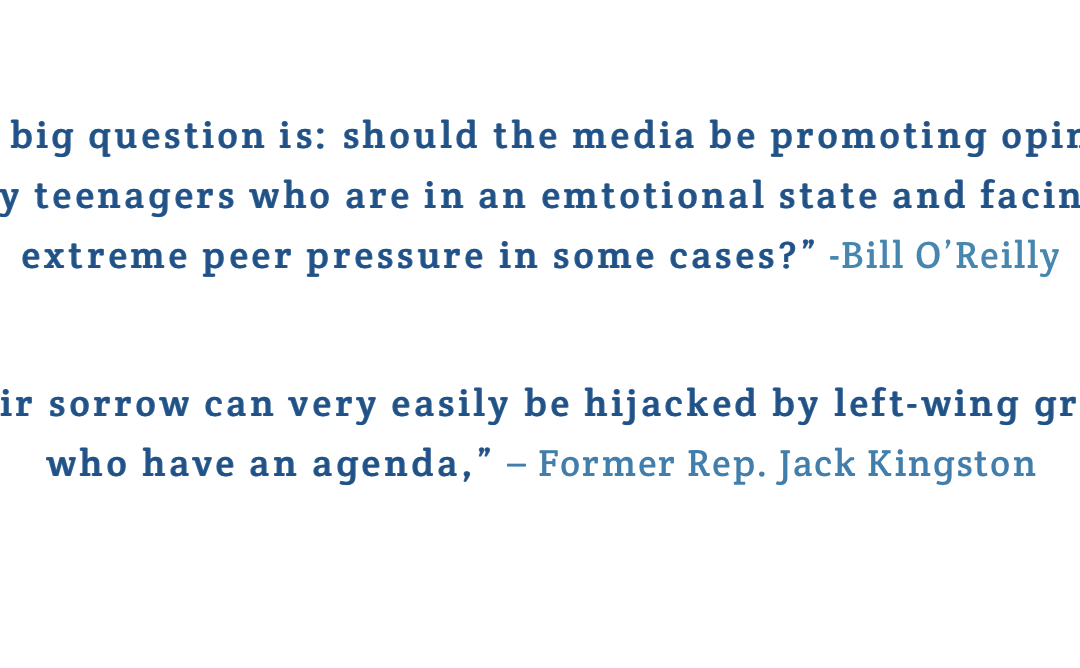
Mar 25, 2018 | Editorial, Opinion
By Rachel Chen ’18
When I heard about the tragedy at Marjory Stoneman Douglas High School in Parkland, Florida, my first reaction was not to have one. “17 dead, 14 injured…” the car radio droned, and I remember thinking, oh. Another one. And I promptly forgot it.
I strive to be compassionate, but after years of hearing about mass shootings every few months, the concept of a mass shooting has lost its tragedy to me. It has become too regular an occurrence for me to summon up the same intensity of grief and despair that it once did. So on Monday afternoon, during an unseasonably warm fire drill, I forced myself to feel the visceral fear of those students under attack in Florida. For one searing second, I tried to imagine what might occur if an active shooter were on campus.
Would I dodge behind cars? Would I run fast enough to reach the BAC? Would I scream as my classmates were cut down, or would shock prevent me from registering it?
Now and in the moment, I shudder. My heart pounds in my ears. 17 dead in a high school of 3000 broke the Parkland community; 17 dead in our entire school of just 1000 would shatter us.
Something needs to change. But why hasn’t it already?
Everyone who passed middle school social studies knows that the Second Amendment guarantees the “right to bear arms,” an important provision in the Revolutionary era for establishing democracy in the face of tyranny and military
abuse. Since those days of muskets and bayonets, the Second Amendment has become a symbol of ultimate freedom—perhaps even more so than freedom of religion, speech, or press.
While other rights have served the same purposes throughout time and thus become established as simple, non-negotiable rights, the right to bear arms has nearly lost its original purpose
as guns become more developed and dangerous. Less thanphysically defending the republic against oppressive government military abuses, it has now evolved into taking an ideological stand for freedom—to the point where owning a gun is a deliberate exercise of that freedom, and the gun itself is used only for recreation.
So the symbolic power of gun ownership drives gun advocates and the National Rifle Association (NRA) to block any legislation proposed to curb our near unfettered access to military grade weapons. Instead, the national conversation
is redirected toward improving the mental health system to prevent the severely mentally ill from obtaining weapons and arming teachers to defend students.
But would these solutions be effective? I doubt it.
In my nightmarish reimagination of our Monday afternoon fire drill, who would be behind the trigger? I may not know any severely sociopathic, mentally volatile aspiring murderers, but I can think of many socially isolated, frustrated, angry teenagers who think they deserve better. Committing every adolescent who fits that profile to a mental institution and a lifetime of mental health stigma would be a greater offense to
constitutional freedom than any gun control restrictions could be.
And who would defend us? Should Dean Ross bring a weapon to Morning Meeting, just in case Should Dean Cottingham carry her pistol from her office to English class in the same bag as her laptop and glasses case? Would I feel any more safe surrounded by teachers with guns who have no experience or desire to wield them?
The image is absurd. Surreal. And for me, the answer is no—no to armed teachers, and no to an “improved” mental health system that confuses adolescent rage and clinical psychosis and treats both the same.
Thankfully, students are stepping up. The survivors of Marjory Stoneman Douglas are speaking out, arranging marches and protests, and challenging their representatives to take a
stand. The sorrow that ought to paralyze them is driving them to greater action, and I am grateful for their leadership in this fight for our lives and futures.
And yet somehow, their suffering is not enough. In the eyes of some prominent national leaders, our loss does not make us qualified to speak—it disqualifies us, because we are too young. Too blinded by emotion. Our tiny, undeveloped
prefrontal cortexes are too easily manipulated and influenced by the freedom-hating left agenda.
Somehow, it is the people furthest away from the situationwho are qualified to speak. It is those who are calm because they are remote, who are unafraid because they are unaffected. It is those who are “rational” and “experienced” because they will never have to picture themselves hiding underneath desks and behind cars from classmates wielding AR-15s.
What would the victims of Parkland say to that?What would the founding fathers think? Maybe I don’t know enough. I don’t understand the intricacies of politics, the checks and balances, the hard-earned compromises that got us to today. I definitely don’t understand the appeal of and attachment to assault weapons that so many Americans feel so passionately. But here’s what I do know: I am 17. I go to a school—like
Sandy Hook, like Columbine, like Marjory Stoneman Douglas High—and I am afraid. I may not have all the answers, but I think I deserve a chance in finding them.
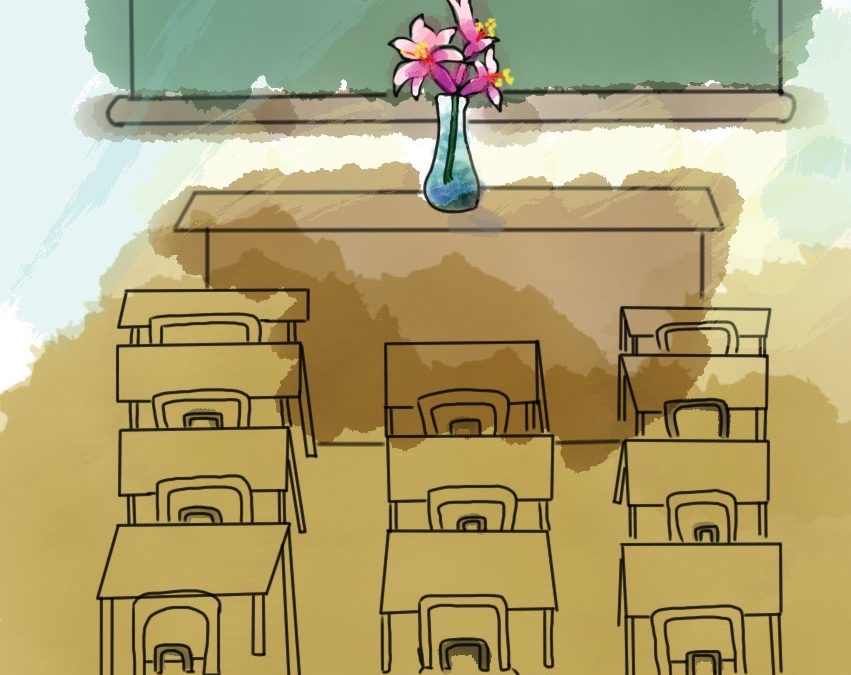
Mar 25, 2018 | Opinion
By Maddie Parrish (VI)
“Everything seemed so easy. No way we would get caught.”
This is a quote from the notebook of Eric Harris, one of the two perpetrators of the Columbine High School shooting in 1999 that killed 13 people. Since then, journalists have attempted to pinpoint some of the motives of the boys: Eric was, according to psychiatrists, a psychopath, Dylan Klebold was depressed, and together they wanted to “wipe out as much humanity as possible” (a quote from Eric). When considering what causes any killer to pull the trigger, mental health is often a critical issue. Nikolas Cruz, responsible for the recent Parkland shooting, had previously been diagnosed with depression. But for many mass shootings, there is another common characteristic among the perpetrators: they look to previous incidents for inspiration.
Since Columbine, there have been 208 school shootings in the US, and an ABC News investigation pointed to 53 attempted or successful school shootings in which the killer explicitly cited Columbine as an inspiration. How could a single act of violence turn into a cycle across America? The answer to this question, although complex, lies partly in the quote from Eric’s notebook.
According to a 2007 survey, the US owns an estimated 48% of the world’s 650 million civilian-owned firearms. We own more guns per capita than residents of any other country. The history of the Second Amendment and the prevalence of guns in the United States means that measures taken in other countries like Australia to essentially ban gun ownership would not work the same way in the US, but also that US citizens are more inclined to turn to guns as their mode of violence. This is made possible by insufficient state regulation of private gun sales. After all, everything was so easy for Eric; even though he had previously been arrested and local law enforcement had seen his website on which he wrote about making pipe bombs, he was able to buy a TEC-9 (a semi-automatic pistol) and three other guns at a private gun show where the seller was not legally required to perform a background check.
Federal law only requires background checks for gun sales by federally licensed firearm dealers, and states have their own laws for gun regulation. Currently, only 12 states (including NJ) and DC require background checks for all privately sold firearms, and six more states require background checks for privately sold handguns only. The statistics are alarming: a 2017 study estimated that 42% of US gun owners acquired their most recent firearm without a background check, and a survey in 13 states of state prison inmates who were convicted of gun offenses found that only 13% obtained the gun from a gun store where background checks are required. So, why is it that 32 states don’t require background checks at all for private gun sales?
The arguments against background checks for private sales include the possibility that innocent citizens might be denied guns because of flaws in the background check system and the claim that regulations would be too difficult to enforce. However, these are justifiable risks of common sense regulations as the federal government works to improve the National Instant Criminal Background Check System. After the shooting at Marjory Stoneman Douglas, it is clear that the net benefits of preventing firearms from falling into the wrong hands outweigh any potential negative consequences.
Additionally, if state and local law enforcement struggle to enforce these regulations at first, perhaps private companies could help out by providing background checks for private gun sales. Walmart is the largest seller of firearms in the United States and performs its background checks through NICS. Being the largest private employer in 22 states, Walmart has tremendous influence and already requires employees who sell firearms to get a background check even when state regulation doesn’t. Companies like Walmart could act as a sort of middle-man, providing more convenient background checks for local private sellers to enforce state regulations.
In the meantime, Pingry students and high schoolers across America who are both angry and fearful should not and are not remaining silent on the issue. Students from Marjory Stoneman Douglas High School are sparking an incredibly powerful movement on a crucial issue, and as it gains momentum across the country, listening to students’ requests and implementing common sense firearm regulations is the least state legislatures can do.
Mar 25, 2018 | Editorial, Opinion
By Megan Pan ’18
In the past few weeks, we’ve had the chance to hear some excellent speeches about parenting. At the LeBow Competition, Jonathan Chen (V) talked about his parents’ “endless love and endless support” and urged us to “thank those who support you,” while at last week’s Morning Meeting, Mr. Keating shared stories about his own parents and encouraged us to “pay attention to how your parents are raising you.” Even Mr. Andrew Onimus, in his presentation at the Carver Lecture, emphasized the support he received from his parents in his struggle with mental illness. Spurred by their example, I’d like to take the time now to pen atribute to my own parents
Since before even I was born, both of my parents commuted every day to work in the city. Sometimes if I woke up early enough, I could hear from down the hall the rustling sounds of my parents getting ready in the morning.
Nestled underneath the warm covers, I listened through a semi-conscious, sleep-clouded haze to the sound of water striking tile in the shower like keys of a typewriter, the crisp click of my mother’s high heels and the swift zip of a jacket, and finally the distant roar of the car ignition growing ever fainter as my parents drove off into the dawn. As I heard but never saw my parents in the mornings, these sounds were the only confirmation that my parents did in fact exist prior to six in the evening and did not simply materialize every night out of thin air, complete with work-weary faces and the perfume of the commuter train.
Nevertheless, it was anything but an unhappy life. The many grown-ups who watched over me during the day treated me kindly, and there was no shortage of love on the part of my parents either. But even if I can say that now, looking back in retrospect, I can’t deny that there were times during my childhood life when I simply felt that something was different. Not missing, necessarily, not wrong either—just different. In the eyes of a young child learning to observe the world around her, the small inconsistencies between other families and hers must have imprinted themselves in her mind; a quick kiss planted on a reluctant cheek in the morning carpool line, a lunch box complete with sandwich and sticky note lovingly packed, a pair of arms outstretched in greeting, waiting at the door—she must have circled them in her memory as if they were objects in a game of spot the difference.
My parents’ love felt like the light of the sun—brilliant, warm, and vividly palpable, but ultimately exer- cised through the physical barrier of distance. However, I never felt any resentment towards them, even as a child. In fact, it is as a result of their absence in my childhood that I believe I am able to better appreciate them now. As opposed to being something that is taken for granted, their presence is something that is alive and dynamic, like a flower wriggling its roots through the dirt or a fire breathing smoke through its embers. Throughout the years of my development, I have grown up and become increasingly independent. One by one, the adults who had watched over and cared for me as a child have let go of my hand, and I have since stepped forward to join them in line as a fledgling adult myself. The responsibility for my own well-being has now fallen squarely on my shoulders with no one else to lead me.
That is, with the exception of my parents. Even now when I’m expected to be able to walk on my own, my parents still remain by my side and serve as a source of guidance and support. But unlike the child for whom the surrogate love of others eclipsed the solitude she felt, I have since learned to become receptive to my parents’ love in every form that it takes.
In parting, I would like to urge members of the Pingry community—adults as well as adolescents- to remember their parents and to be forgiving of them. If there is anything in my perception of my parents that has changed from childhood, it is that I have learned that they are fallibly, beautifully human, subject to the same emotions, desires, and fears as we all are. The true strength of my parents’ love manifests itself in its endurance. Throughout all this time, it has never wavered or faltered—instead growing to overcome any barrier in its way, like vines of ivy winding their way upward, ever upward in search of sunlight.












